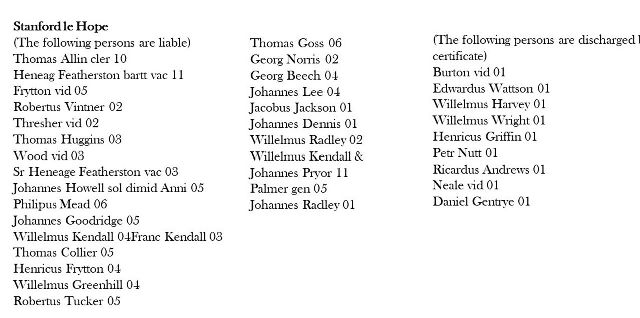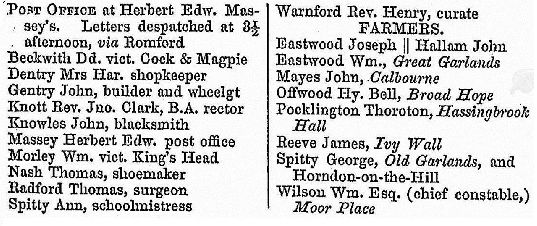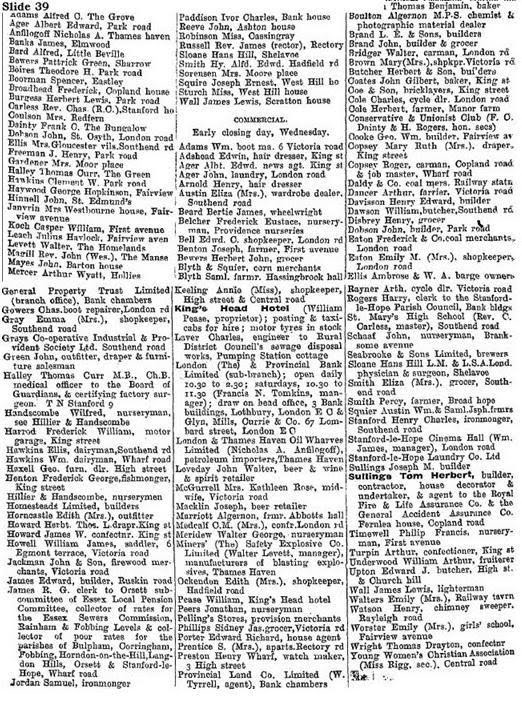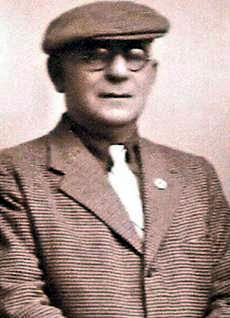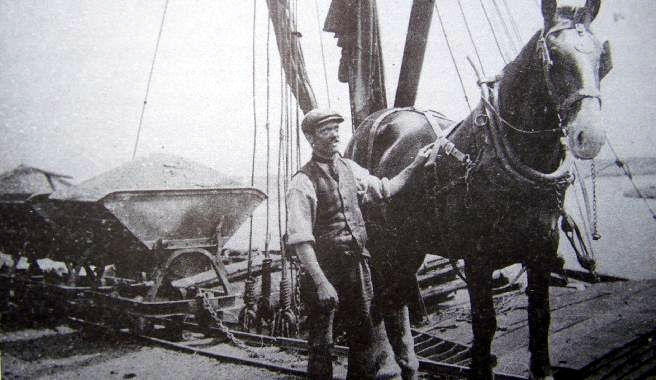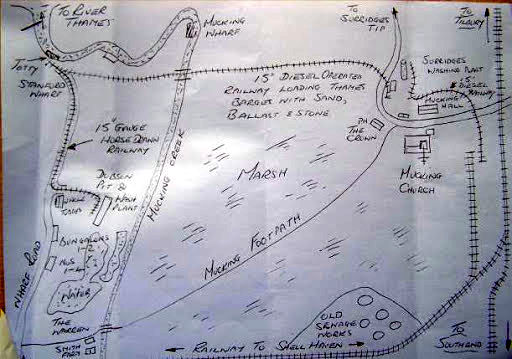Hearth Tax Levy
The coldest part of the current Holocene interglacial which has lasted some 11,000 years and during which all of human civilisation has arisen, was a period of about 400 years ending around 1850 and known as the little ice age. In the depths of the cold between 1662 and 1689 a tax was imposed on the country based on the number of fire hearths a dwelling house contained. This was an early example of what is now termed progressive taxation in that the wealthiest who had the largest dwellings and hence hearths paid the most with the poorest who possessed only one hearth usually exempted. The Hearth Tax return for Michaelmas 1670 shows a total of 36 households in the Parish with nine exempted from the tax.
At the time of the 1821 census the parish had a total of 301 souls and 330 in 1831. By the 1841 census there was a total of 325, 182 male and 143 female and by 1851 this had increased only to 439; 222 male and 217 female.
By the late 1840’s trade directories were starting to be published and extracts from the 1848 White’s directory and Kelly’s 1917 directories show just how much the area had expanded since the coming of the railway in 1854. The census returns show the 1861 population to be 608 and the 1871 population to be 699.
Farming was the dominant industry and the marshlands were used mainly as pasture for sheep and as we saw earlier in former times the sheep were valued for their milk which was used to make the delicately flavoured cheese but by the late 18th century they became more valued for their meat. Crops grown included pulses and after the coming of the railway the area became noted for the quality and abundance of its strawberry production large volumes of which were shipped to London during the season.
In 1836 a company called the Thames Haven Dock and Railway Company was promoted with the aim of expanding the wharves around Thames Haven for the importation of cattle and fish. A railway was to be constructed between there and Romford on the Great Eastern railway so that the perishable goods could be bought quickly to the large London market. The company was founded with high hopes of becoming a major port but efforts to raise the finance to build the railway repeatedly stalled. The 1854 Act of Parliament that had authorised the construction of the London Tilbury and Southend Railway also allowed it to take over the Thames Haven Dock and Railway Company on condition that the four mile branch line from Thames Haven Junction was completed and investment made in upgrading the wharves. The branch opened in 1855 again with the expectation of a booming trade in the import of cattle and fish. In spite of the close proximity of the wharves to London and its good rail connection, traffic volumes were disappointing and it was not until 1865 when a devastating cattle plague struck, that he port was named as one of the relatively few where the importation of cattle would be permitted. New wharves and sheds were constructed to hold large numbers of cattle and sheep and trade boomed. This boom was unfortunately short lived for in 1875 the Government decreed that as a result of a foot and mouth epidemic the importation of live animals would be suspended and all livestock would have to be slaughtered at the point of entry to the country. Thames Haven lacked slaughtering facilities and the trade was directed elsewhere.
This however was not the end of the story for Thames Haven as just one year after the cattle trade suddenly ended a large shed for the storage of imported oil in barrels was constructed adjacent to the cattle pier by the Petroleum Storage Company. The site was selected for oil storage because of its rail connections. The Petroleum Act of 1871 had placed stringent limits on the movement of oil by ship upstream to London. The company expanded dramatically over the next two decades changing its name to London and Thames Haven Oil Wharves Ltd and was the point of import for all the oil destined for London.
In 1908 the first oil refinery in the United Kingdom was constructed to the design of Nicolas Anfilogoff a brilliant chemical engineer who had been born in Latvia in 1875 moving to the UK in 1894. Mr.Anfilogoff became the manager of the refinery and was resident at Lathol House which was constructed by local builder John Dobson.
The story of the subsequent development of the marshland around Shell Haven and Coryton by the oil industry is well known locally and the area became a major centre for the refining industry with two large refineries, one owned by Shell and the second by Mobil then BP and finally Petroplus. The Shell refinery closed in 1999 and is now the site for the DP World port development. The Petroplus Company was declared bankrupt in 2012 and their refinery at Coryton closed in June of that year. The site is undergoing conversion to a refined products importation terminal and centre for energy development.
A second major but relatively short lived industry established on the marshland was that of explosives manufacture by a Birmingham based company called Kynoch. The story of this enterprise is also very well known locally and the Kynoch Company, its Essex factory, the light railway associated with it and the village of Kynochtown is the subject of an excellent and detailed book by Peter Kay. In view of this and due to the fact that it was located in Corringham Parish, we will comment on it here only by mentioning that the factory was established 1897 when the company purchased Borley Farm a 200 acre site on the marshland and expanded it rapidly to supply explosives for use in the First World War. As many of the male population were serving their country on the battlefields of Europe, women served in many other ways not least by forming the bulk of the workforce of the Kynoch factory which had numbered some 6000 at the peak.
At the Armistice of 1918 the demand for explosives declined dramatically and rationalisation of the explosives industry resulted in the closure of the works in 1919.
The village of Kynochtown was renamed Coryton when coal merchants Cory Brothers of Cardiff established an oil storage depot on the site.
The proximity of Stanford Wharf to large deposits of sand and gravel in the area known as The Warren in Wharf Road, resulted in a thriving industry from the 1920s until the early 1950s for the shipment of these materials to locations by the River Thames. We have already noted that Manor Farm located in The Warren was demolished in 1938 to make way for gravel extraction.
The following is a memoir written by ‘Nobby’ a friend of Mr. J. Willis, and reproduced by kind permission.
“Dobson’s sand and ballast pit closed approximately 1935 to 1940. I can remember seeing a steam crane digging ballast and loading wagons to be hauled to the washing plant, also wagons being horse drawn down to the jetty and loaded on to Thames Barges. Surridge’s washing plant closed in the early 1950’s and up to then they were running diesel hauled tippler wagons on a regular basis to Wharf Road jetty and to the cattle field at Mucking for main line deliveries.”
Halls aggregates took over the Surridge operation after its closure.
As we have already noted by the late 19th century farming was in decline owing in no small part to the availability of cheap imported grain and foodstuffs and with a rapidly growing population many of the local farms began to be auctioned off cheaply for housing development. The area was actively promoted by land companies such as Homesteads Limited and the General Property Trust as a healthy country retreat within easy reach of the Metropolis by train.
Thus the early 20th Century marked the start of the commuter phenomenon in the area.
